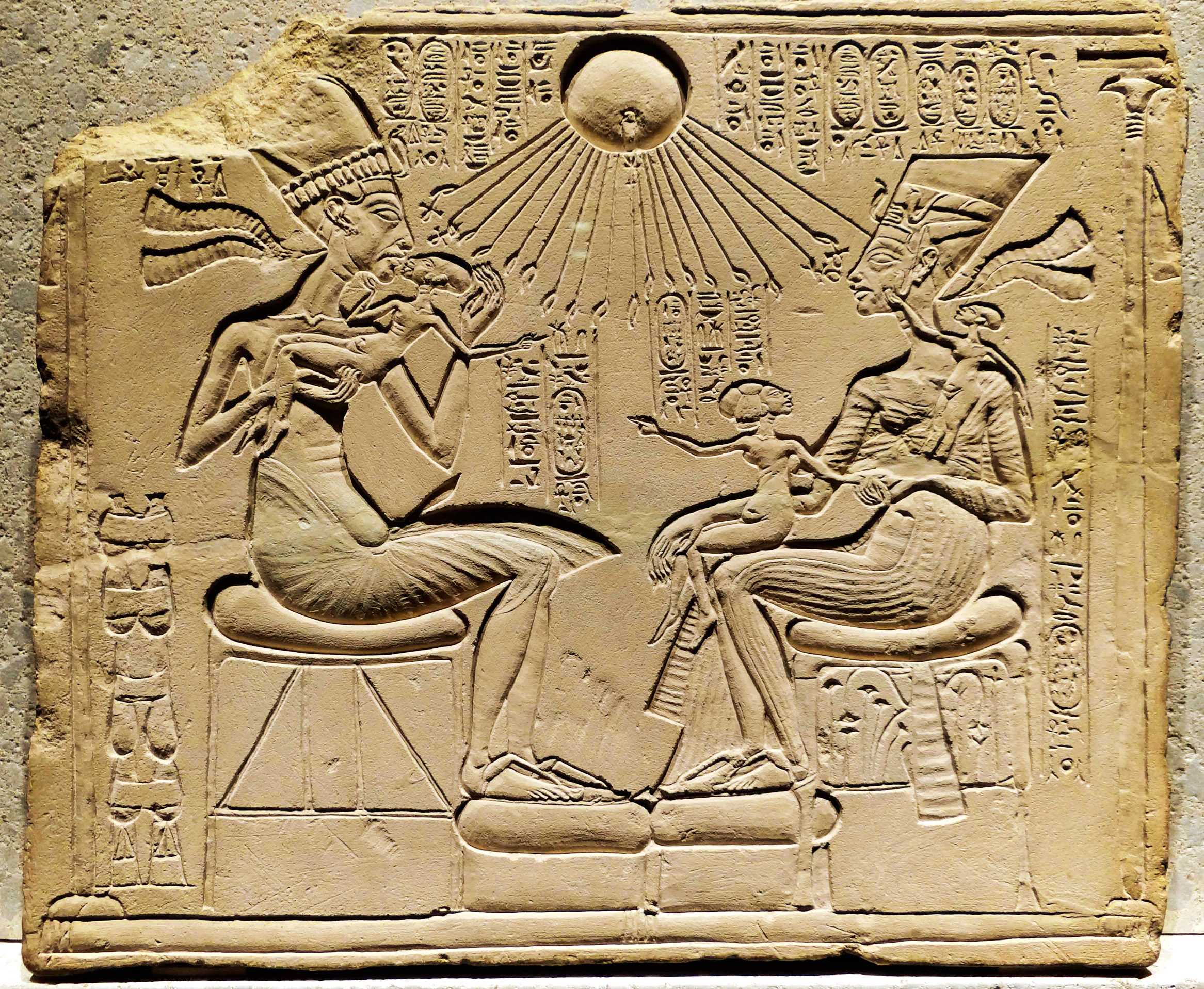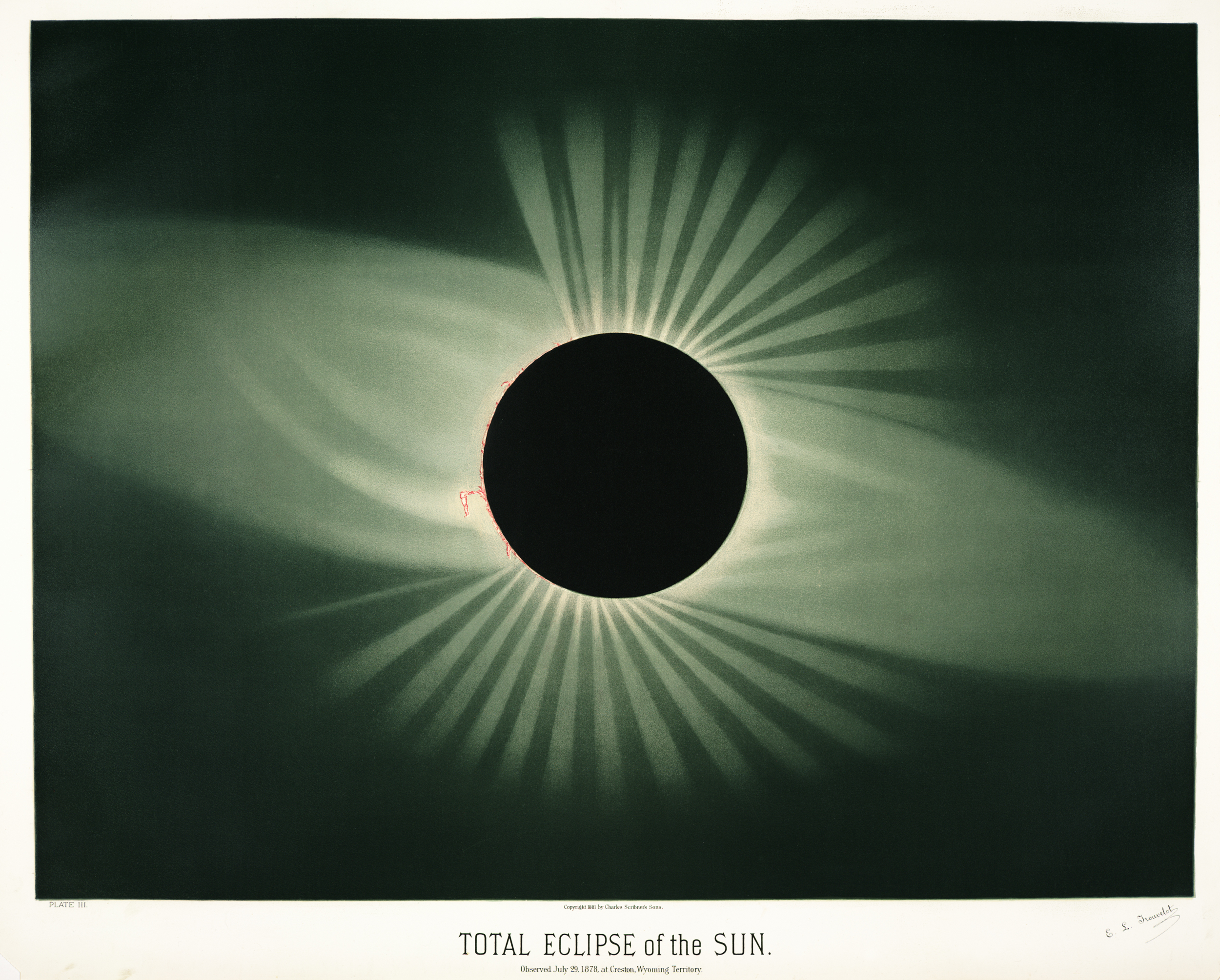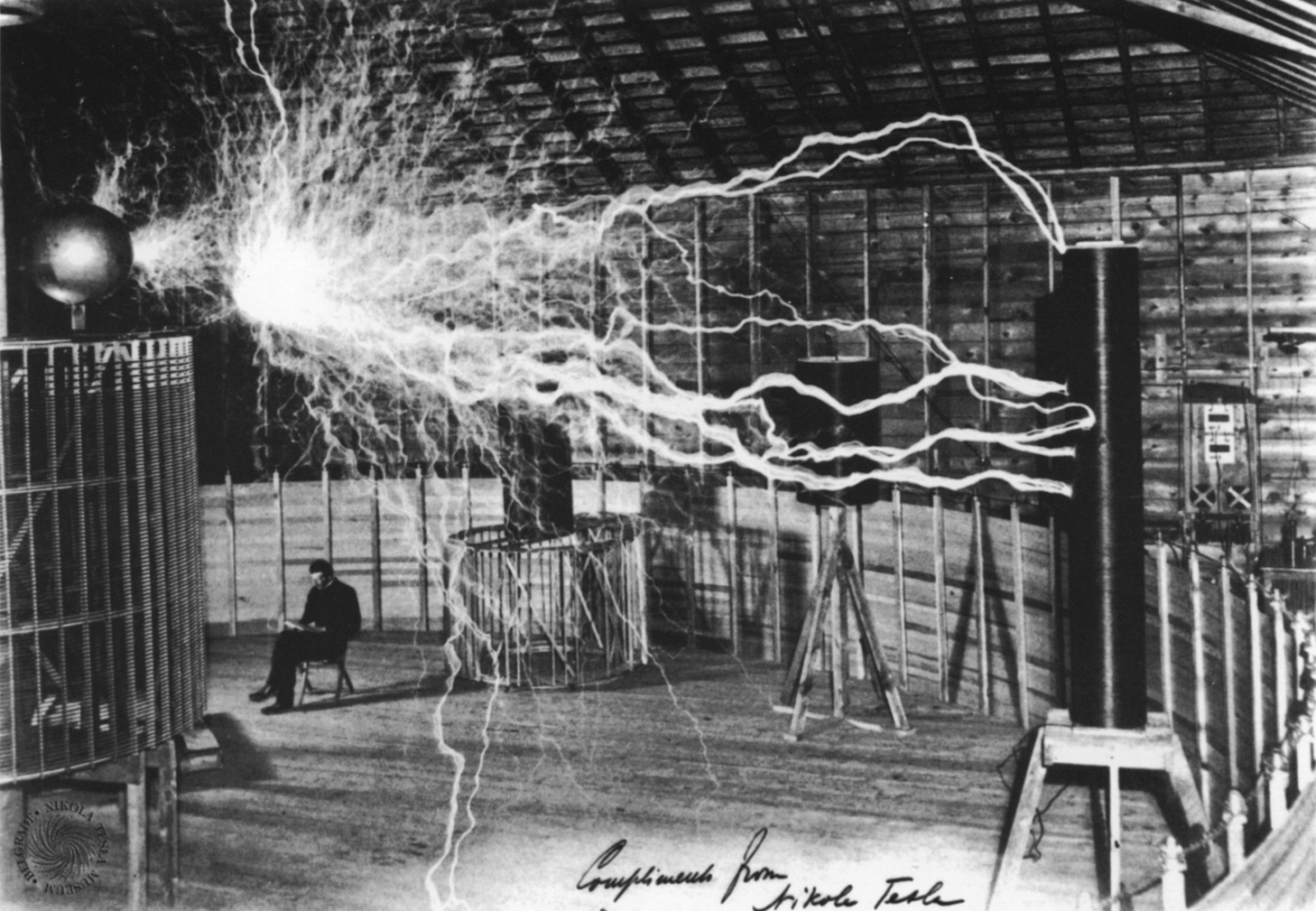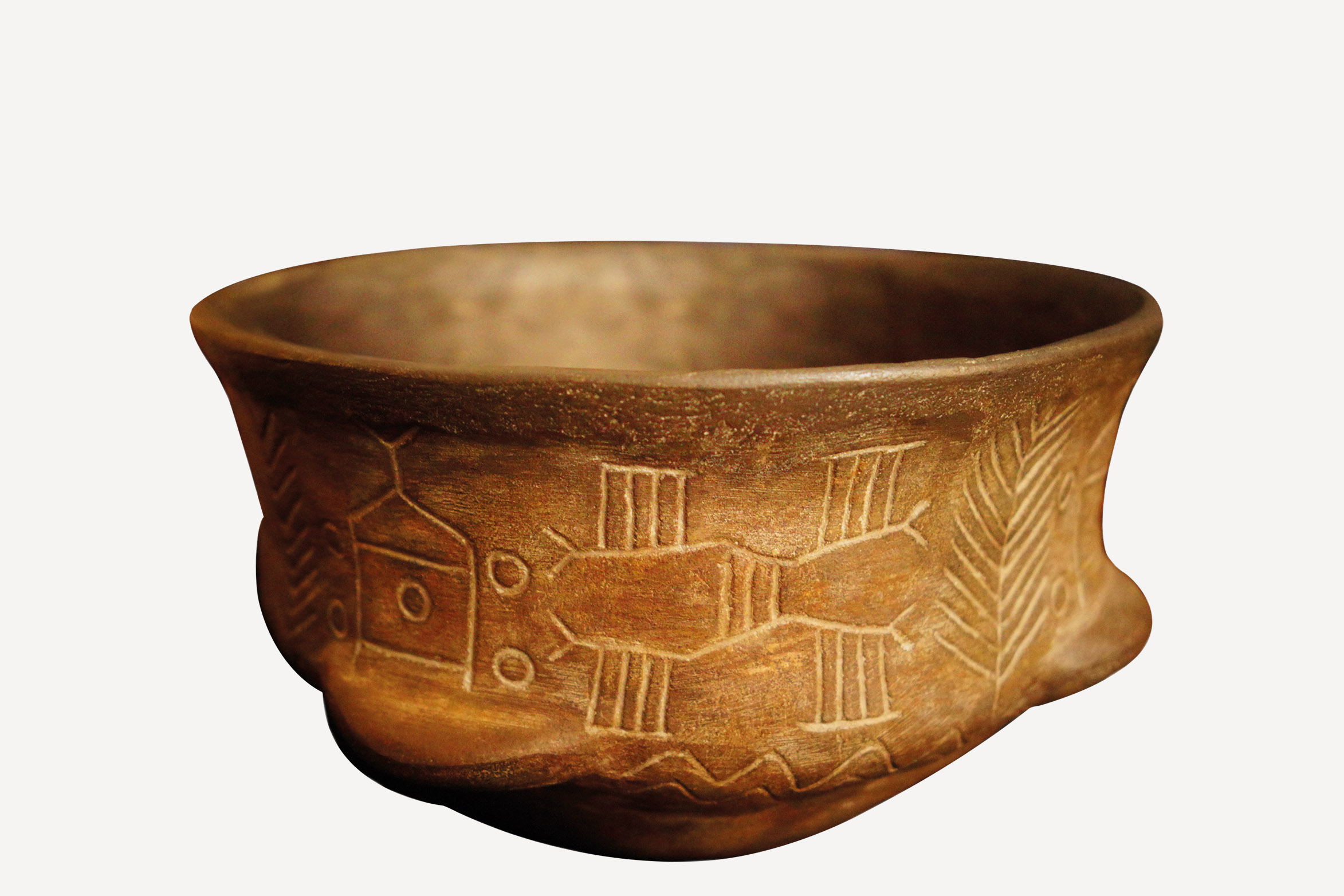
The ruler sits with his children on his knees, warmly caressing his wife’s face – no pharaoh before or after allowed himself to show such human emotions. Akhenaton’s religious and social revolution continues to fascinate researchers to this day.
In the modern world, time passes quickly. We momentarily focus our attention on events and people who have been brutally torn from the depths of anonymity by some event inspiring the fleeting interest of the mass media. But on the other hand, there are people who lived tens, hundreds, sometimes thousands of years ago, who have nonetheless entrenched themselves in the collective consciousness forever. Their faces and figures – once immortalized in stone, pictures, etchings or in some other way – have become icons of civilizations.
Without a doubt, one of the most ancient members of this group is the Egyptian royal couple who ruled during the mid-14th century BCE. She is the beautiful Nefertiti. Her exquisite bust, a treasure of a Berlin museum, still inspires delight. He is the pharaoh Akhenaton. His strange and seemingly irregular depictions are hard to forget, and his extraordinary life and achievements are an endless source of inspiration for the human imagination.
A genius or a deviant
Some people hold that Akhenaton was a brilliant religious reformer who was the first in history to introduce the monotheistic religion of the Sole God, that is, the Aten. According to others, he was just a smart politician, who did so in order to restrict the power of the priests of the old gods, above all the Thebean Amun. In another interpretation, he was a mystic, to whom God himself appeared – that very God, the Aten. Some saw him as a dreamer and pacifist, who forbade wars, launching a religion of love and the brotherhood of all people. Others saw him as a cross between Einstein and Mahatma Gandhi; an intellectual genius and an angel of gentleness in one.
On the other side are people who see the Pharaoh as a physically and psychologically degenerate deviant, cohabiting sexually with his mother, daughters and brother or son, whom he made ‘Queen’ of Egypt. There were also those who believed Akhenaton suffered from an illness that deformed his body and led to the loss of his genitalia; Nefertiti’s daughters (we know of six) were thus the children of Nefertiti and… we don’t know whom. Some go even further, saying that the real ruler of Egypt died at the start of his reign and a certain woman impersonated him from then on.
But that isn’t even the most outlandish idea from the authors behind these pseudo-theories, because you can even read that Akhenaton wasn’t a human being at all, but an alien from another world who came to Earth to instil the idea of the Sole God in a humanity entrenched in its primitive beliefs. These digressions tell us more about their authors’ vivid imaginations than about the Pharaoh of centuries ago.
The conflict over Akhenaton goes on, and the best thing we can do is leave it to professional Egyptologists. But one aspect in all of these discussions has broader significance. It’s about the fundamental issue of defining the cult of the Aten, and how to position it in the history of religion. Does it already count as monotheism, and does it have some kind of link to Judaism, and thereby to Christianity and Islam?
Beautiful is the beauty of the Aten
In the mid-14th century BCE, Egypt was a mighty superpower, its control stretching from Sudan in the south to Syria in the north. For nearly 40 years, the throne was occupied by Amenhotep III, who was courted by other monarchies of that era. The Pharaoh lived in Thebes, which was also the great religious site of the cult of Amon. The king’s first wife was Tiye, from a wealthy albeit non-royal family. She gave birth to several daughters and at least two sons, the older of whom died, which made the younger son, named after his father, the heir to the throne. In around 1349 BCE, the old Pharaoh died. Amenhotep IV, aged around 20, took power. His rule (roughly 1349–1333 BCE) would go down in history as a time of one of the most radical religious revolutions.
The young ruler slowly began to change centuries-old traditions. The king was crowned not in the temple of Amon in Thebes, but in Hermontis, a significant site for the worship of the sun. The Pharaoh also took on a completely new title: ‘First Prophet Re-Horakhty, who rejoices in the name of Shu, which is the Aten’. It is composed of a reference to the hawk sun god (Re-Horakhty) and the deity of the air (Shu). It also includes the rarely-mentioned personification of the sun’s radiant disc, the Aten. The Pharaoh named himself the great priest of his God and built him four temples east of Karnak. They housed images of the Aten as the sun’s disc with numerous rays emanating from it, each ending with hands wielding the symbol of life: the ankh.
In one of these temples there were also five-metre high statues of Amenhotep IV in a surprising form: without genitalia, with a broad pelvis, with breasts and thick thighs, an exceptionally narrow face and a long nose, slanting eyes and fat lips. For decades, Egyptologists have wondered how to explain this form – one theory holds that this image indicates the ruler’s identification with the Aten, the creator presented as a sexless Father-and-Mother of Everything.
In the third or fourth year of his reign, the still youthful Amenhotep IV unexpectedly experienced the magical renewal of his vital strengths during the traditional Sed festival. Images depicting these celebrations show him together with his wife Nefertiti, who already bears the title Nefer-Neferu-Aten, or ‘Beautiful is the beauty of the Aten’. Next, in the fourth year of his reign, the royal couple unexpectedly leave Thebes and head to central Egypt. There, in the middle of nowhere, on the eastern bank of the Nile, the Pharaoh orders the construction of a new capital city, Akhetaten, that is, the Horizon of the Aten (today’s Amarna). A great city is built at lightning speed: in the fifth year of his reign the ruler travels between Thebes and Akhetaten, but by the sixth he, his family and functionaries have already moved into their new residence. At the same time, he changes his name to Akhenaten, which approximately means ‘dear to the Aten’, or, more accurately: ‘the effective spirit of the Aten’. The Pharaoh thus sees himself as a kind of ‘transmitter’, through whom the light of his god reaches our world. Still in the sixth year of his rule, the king carries out the official inauguration of the city and erects 14 border steles, making an oath to never cross them – meaning he would never leave the city.
Scratching off the names
The time had come for the real revolution. In the ninth year of his reign, the Pharaoh ordered the country-wide destruction of the name Amun and (less significantly) of the other gods. They simply stopped using the word ‘God’ (netyer in Egyptian), even with reference to the Aten – his name was sufficient. The king declared that he was the only one to know the sun god, whose religion he would transmit to his subjects. He composed subtle hymns in praise of the Aten. The reforms were supported by Nefertiti and the old queen Tiye, who came to Akhetaten. Curiously, there seems to have been no opposition, even though his actions were truly radical – Amun’s name was even erased from the top of tall obelisks, when it wasn’t even visible from ground level! It seems like this kind of fervour was matched only by the Byzantine Iconoclasts fighting against the cult of icons, or the staunch supporters of the Reformation who removed all images of the saints from churches.
In the 12th year of his reign, Akhenaten summoned ambassadors from neighbouring countries to Akhetaten, and they came in great numbers, bearing gifts. Reliefs made for this occasion show the king with his wife and six daughters under the protective disc of the Aten, whose rays tipped with hands caress this ‘holy family’. In the new capital, there were also other surprising depictions: the Pharaoh in his private apartments surrounded by his wife and children as he strokes his wife’s face and holds his daughters on his lap, kissing them lovingly and tenderly. Never before and never again was a Pharaoh shown in this way.
And suddenly the idyll was over: in the 14th year of Akhenaten’s rule, his second daughter died (bas-reliefs from the tomb in Akhetaten show the grief-stricken royal family). Not long after, images of her three younger sisters also disappear from inscriptions – we may suspect that they too passed away. Among Akhenaten and Nefertiti’s six daughters, just two remained: the eldest, Meritaten, and the third, Ankhesenpaaten. In the 14th or 15th year of his rule, Akhenaten married the first of them to Smenkhkare, who was probably his son from another wife or concubine, making him co-regent. But the young co-ruler died soon after. Nefertiti appeared as Akhenaten’s wife for the final time on a recently-discovered inscription from the 16th year of his reign. The ruler himself died a year later.
It’s likely that after his death, he was briefly succeeded on the throne by a woman – Meritaten or Nefertiti – and then by the 10-year-old Tutankhaten, who took Ankhesenpaaten as his wife. Thanks to the results of DNA tests published in 2010, we know that he was the son of Akhenaten and one of his other wives, not Nefertiti, but Akhenaten’s sister. The young king quickly abandoned the Aten and Akhetaten, moved to Thebes and ordered worship of the old gods to be restored. He even changed his name to Tutankhamun. The time of the religious revolution was gone for good.
Being afar, coming close
Some specialists (Egyptologists, historians, religious studies experts), as well as a much broader group of amateur enthusiasts, have detected links between the religion of the Aten and the Bible and Judaism, and indirectly with Christianity and Islam. They wanted to see the Sun God as the monotheistic Sole God with universal features. One particularly interesting source is the so-called “Great Hymn to the Aten” probably written by Akhenaten himself and preserved on the walls of one of the tombs in Akhetaten. That text contains these familiar-sounding words (translated into English by William Kelly Simpson):
“[…] you are alone, rising in your manifestations as the Living Aten: appearing, glistening, being afar, coming close; you make millions of transformations of yourself. […] The earth came forth into existence by your hand. […] When you rise, they live; when you set, they die. You are a lifespan in yourself, one lives by you.”
This type of expression brings to mind first and foremost the biblical Psalm 104, in which God similarly appears as the sole creator and ruler of the world and “wraps himself in light as with a garment” (Psalm 104:2). Is this a borrowing from the solar Aten? Attention has also been drawn to a passage from the Book of Isaiah (Isaiah 44:6): “apart from me there is no God”, which is also alleged to have come from the Egyptian religion.
Religion and logic
But that’s not all: in the Hymn, Akhenaten clearly states that only he knows his God, which has been compared to the words of Jesus: “All things have been committed to me by my Father. No one knows the Son except the Father, and no one knows the Father except the Son and those to whom the Son chooses to reveal him” (Matthew 11:27). Some go even further, defining Akhenaten’s religion as following the same pattern as the Muslim profession of faith: “There is no God but Aten and Akhenaten is his Prophet”.
Most of the first researchers of Egyptian and Middle Eastern religions were Biblical scholars, who treated ancient cultures as, at best, the first shaky steps of humanity towards monotheism and the Judeo-Christian God. This was also the view taken of the cult of the Aten – as a break with polytheism and a pre-monotheism, or even monotheism. Meanwhile, in the ancient world (not just in Egypt), nobody thought in either-or categories – either one or many gods. In 1973, the Egyptologist and religious studies expert Erik Hornung published a book with the characteristic title The One and the Many (orig. Der Eine und die Vielen) and the explanatory subtitle Conceptions of God in Ancient Egypt. He put together a wealth of material demonstrating that over the course of the more than 3000-year development of Egyptian civilization (something that we in Poland, coming from a country with a history barely longer than one millennium, would do well to remember), the concept of the Sole God and many gods co-existed. A huge number of divine beings were worshipped, but at the same time, worshippers turned to the Sole God, emphasizing that He was the only one. The Egyptians employed a different logic to our own binary logic. It was a multi-value logic, according to which singularity and multitude are not mutually exclusive, but complementary. Yet, says Hornung, on one occasion Egypt abandoned this model, precisely under the reign of Akhenaten, who implemented a dual-value logic, in a move that was revolutionary for that era. Hornung writes explicitly of monotheism, and looks at the development of religion in evolutionary terms: polytheism, monotheism and… Well, indeed, his book ends with a striking statement: “Who else but a deeply religious person would say that God has not said his final word, even by revealing himself as the Sole God. Human consciousness in its new phase remains open to new revelations, the nature of which can in no way be predicted beyond the fact that it will be different. The world of many gods has passed and no-one will now make bull sacrifices to Amun or Zeus. Even the world of the Sole God, being the anthesis of the other world, isn’t necessarily the final one. Each of these worlds relates to a specific phase in the revolution of human consciousness, and therefore cannot be evaluated in categories of truth or falsehood. What I have just written does not entail agnosticism, but relativity in points of view. Each of those two worlds is ‘coherent’ within its own system of references, but neither exists beyond historical space and cannot ascribe itself an absolute value.”
In later decades, researchers have gone significantly further. Starting from the idea of this different logic, they have shown that the worship of the Aten is still difficult to define as ‘monotheism’. Put simply, the question “Monotheism or polytheism?” is a badly formulated question – as emphasized for instance by Christian Jacq, the French Egyptologist. Furthermore, it is a biased way of comprehending the history of religions, which of course don’t necessarily have to lead towards ‘our’ monotheism. In most of the world, this was imposed by force during the times of great geographical discoveries, and later in the colonial era. The question is, what would the religions of North and South America or Australia, for instance, be like nowadays if it weren’t for the ‘white conquerors’? We always think, therefore, in the categories of our own civilization. Studies of the ancient Egyptian religion may thus be an exercise in perceiving religious phenomena differently, and not just religious ones for that matter. Our logic and our point of view on historical processes may not be the only true path. In this context, Akhenaten as an individual and his ideas continue to inspire and fascinate, despite the passage of millennia.
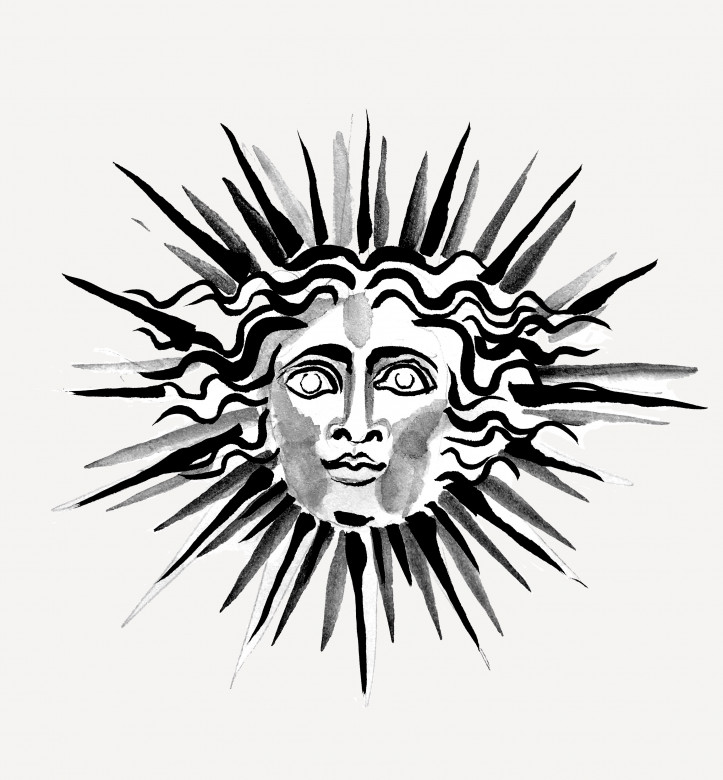
Translated from the Polish by Zosia Krasodomska-Jones


